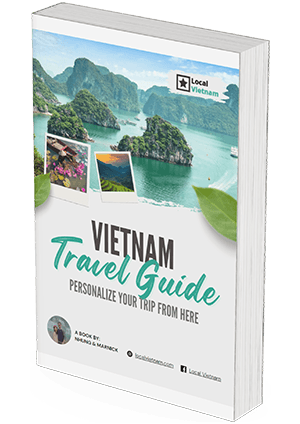What is Cu Lao Xanh Island
Cu Lao Xanh Island, also called Vân Phi, sits about 24–25 kilometers off the coast of Quy Nhon in Nhơn Châu Commune. The name translates to “Green Islet” or “Green Island,” and from a distance you see why: a hilly green backdrop rising out of the sea. The island is small—just over three square kilometers—but large enough to support a settled community and some modest tourism facilities.

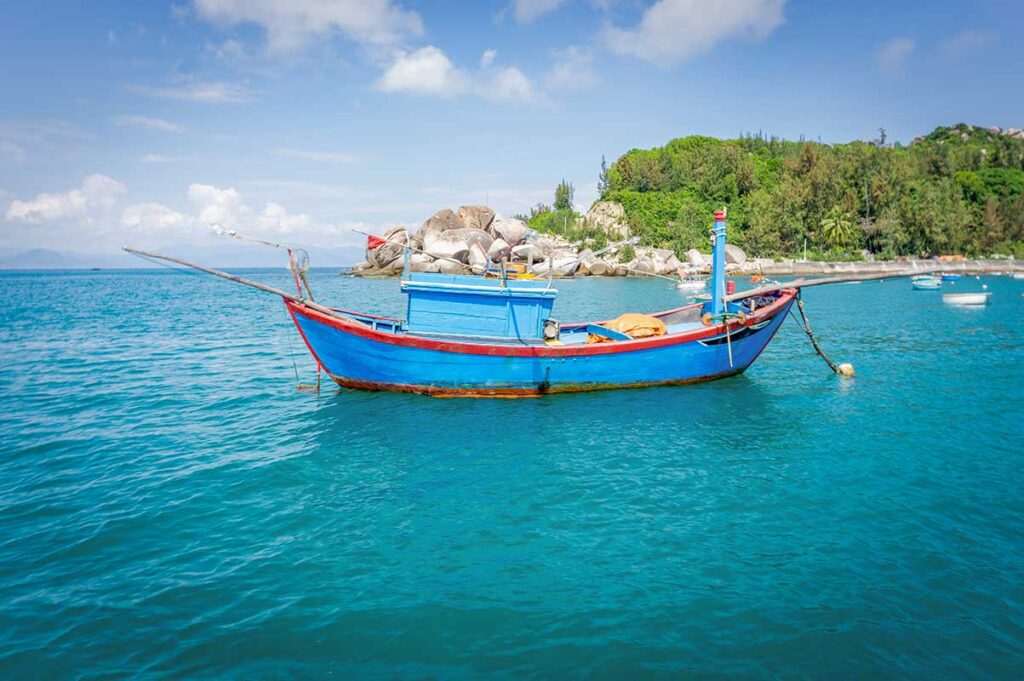
Life here centers on a fishing village along the southern shore, where boats line the beach and narrow lanes lead into a cluster of low houses. The north of the island is more rugged, with rocky slopes and scrub-covered hills. Residents rely mainly on fishing and aquaculture, with homestays and small eateries gradually adding another source of income. Tourism remains low-key—no big resorts, just simple places to stay, local meals, and the chance to see everyday island life. A century-old lighthouse and a granite youth flagpole mark the island’s highest ground, reminders that Cu Lao Xanh is both a working community and a point of national pride.
Foreign traveller restrictions, permits and permission
This is the most important thing to know before planning a trip here. Some Vietnamese sources say that foreigners are not allowed on Cu Lao Xanh because it is considered a military-managed area. At the same time, there are tour listings online and even a handful of traveler reports from foreigners who say they reached the island. The reality is unclear and can change over time, so don’t assume you can just show up at the pier and board a boat.
The safest approach is to verify locally before making any plans. If you are interested in visiting, check directly with tour operators or boat services at Hàm Tử pier in Quy Nhon, or ask local authorities in Nhơn Châu about current rules. In all cases, bring your passport or ID, as checks are more common here than on the mainland. Keep in mind that boat schedules also depend on weather and demand, so expect some flexibility in departure times.
What to do and see on Cu Lao Xanh
Cu Lao Xanh is not packed with attractions, but that’s part of its charm. What you find here are a few meaningful landmarks, natural spots, and the simple pleasure of circling the island to take in its views. If you come, these are the main things to expect.
1. Discover the fishing village and local life
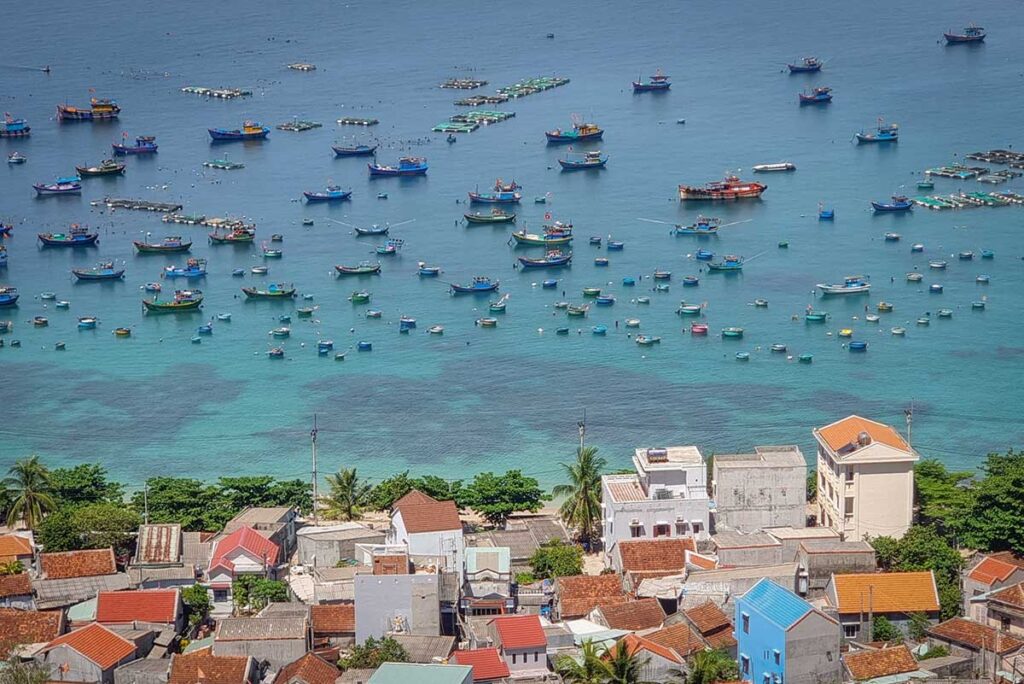
The heart of Cu Lao Xanh is its small fishing village on the southern shore. Colorful wooden boats line the beach, fishermen mend their nets, and narrow lanes wind between simple houses. Daily life moves at a slower rhythm here, with people gathering at small cafés, children playing near the pier, and families preparing seafood for market.

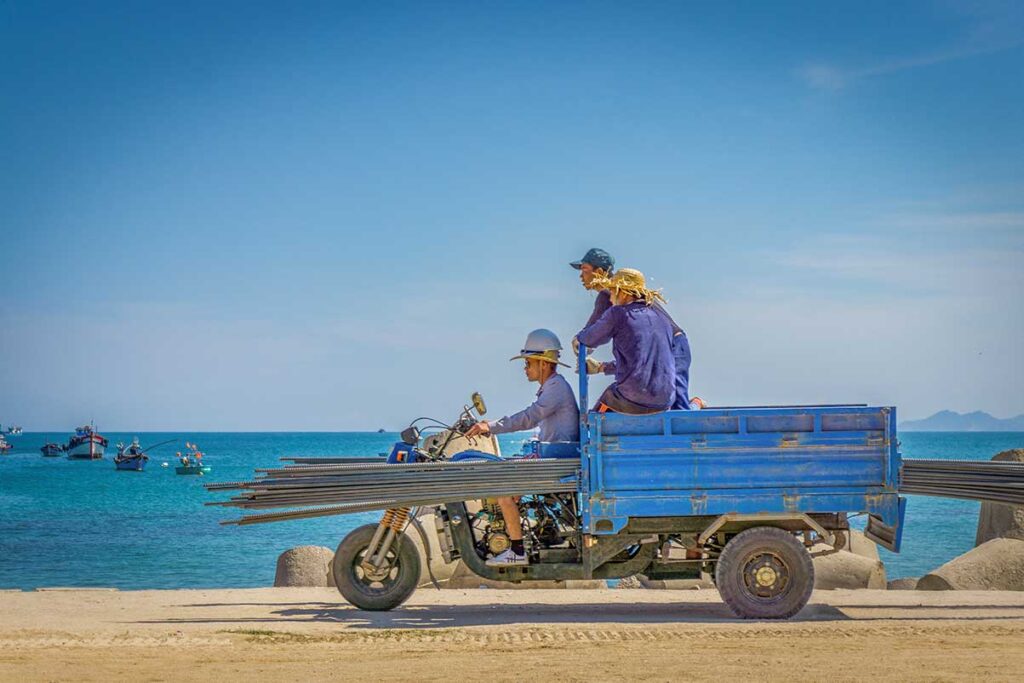
For travelers, walking through the village offers a glimpse of everyday island life that hasn’t been reshaped much by tourism. It’s not set up as an attraction, but that’s part of its appeal. You can stop to watch fishermen bringing in their catch, observe boat building and net repairs, or simply sit by the pier as the sun goes down. There’s also a small local pagoda where villagers worship, which you can respectfully visit.
2. Cu Lao Xanh Lighthouse (Plogam Bir)
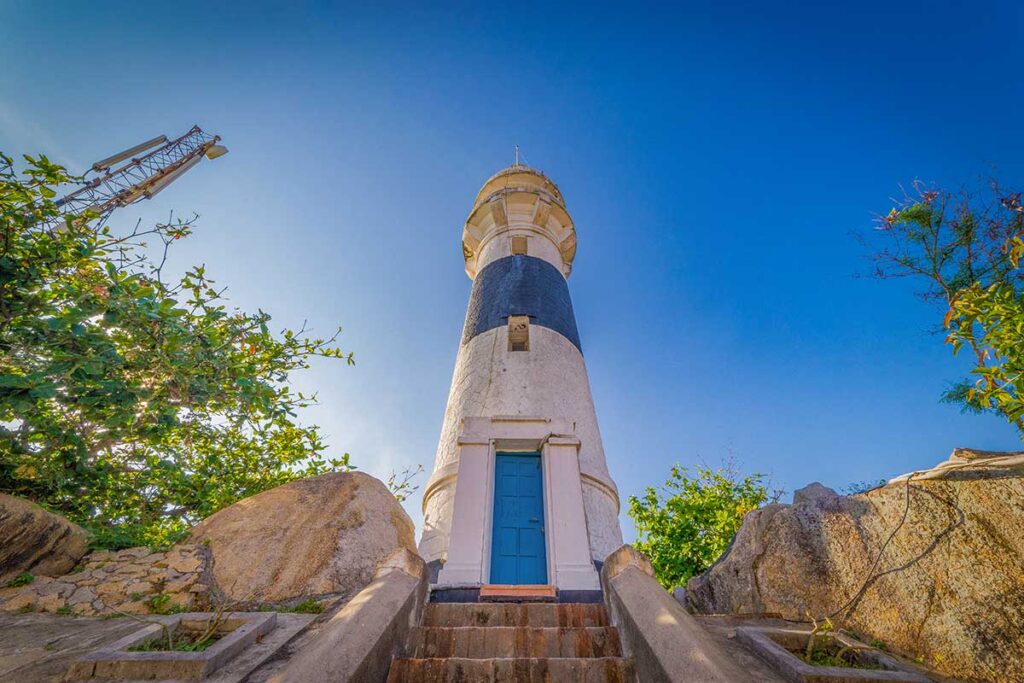
The island’s most prominent landmark is its French-built lighthouse, known locally as Plogam Bir. Dating back more than a century, it still guides ships navigating the central coast, its light visible up to 50 kilometers offshore.
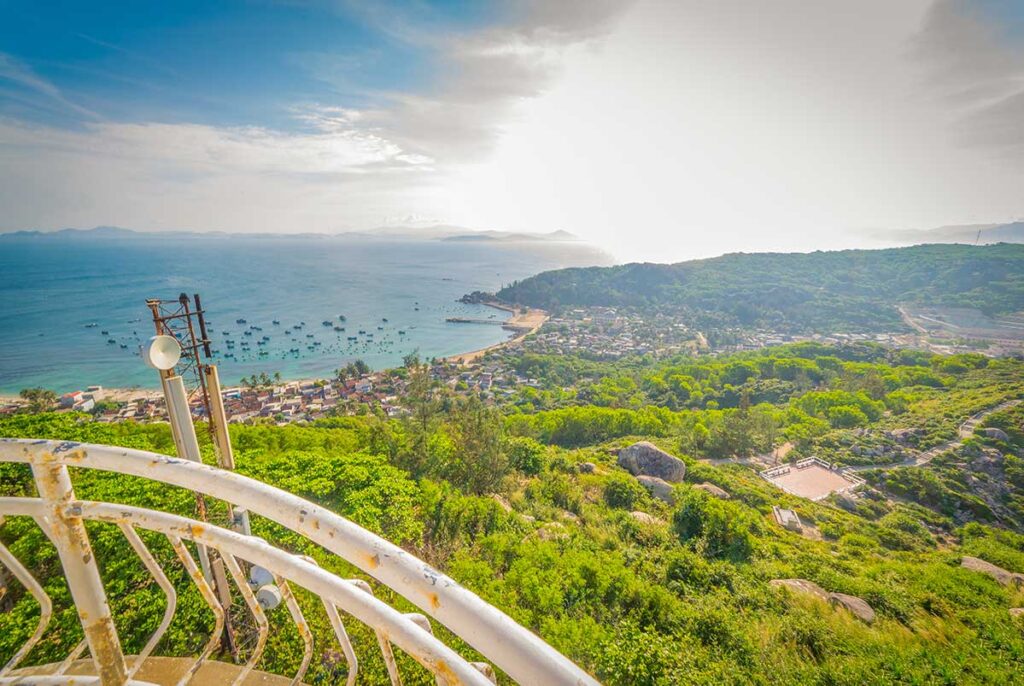
The tower stands at the island’s highest point, surrounded by scrubland and scattered wildflowers. From here, you get sweeping views over the fishing village and the surrounding sea.
For travelers, the lighthouse is usually reached by motorbike along a narrow but mostly paved road, with a short walk up at the end. The climb is not strenuous but can be hot under the midday sun, so mornings or late afternoons are more pleasant. In some cases, the tower itself may not be open for climbing, but the panoramic views from the base alone are worth the trip.
3. Youth/National Flagpole
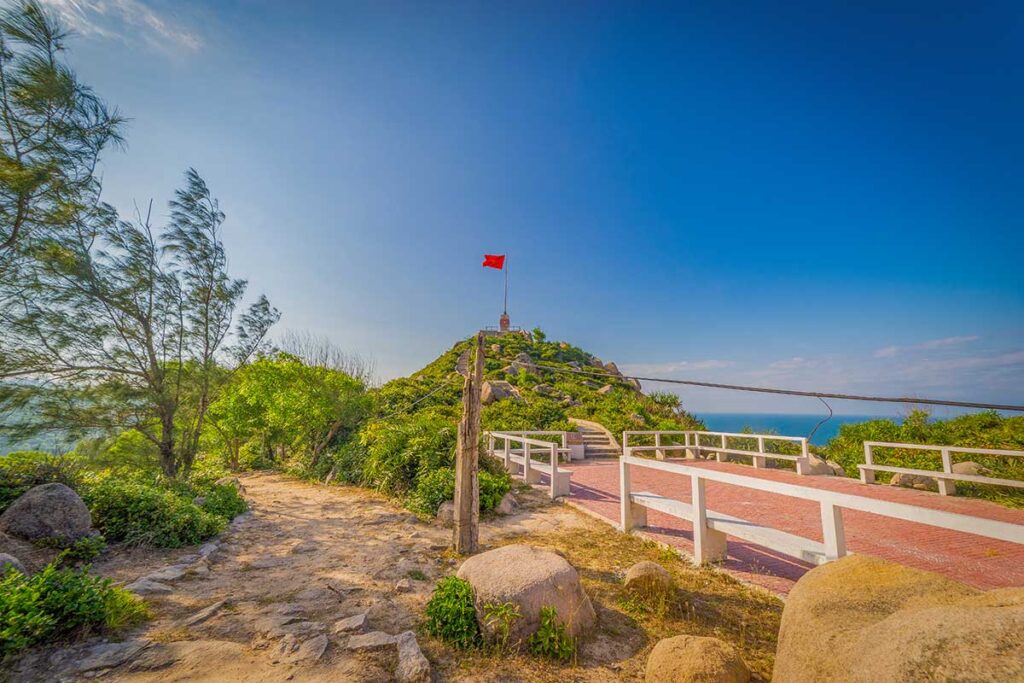
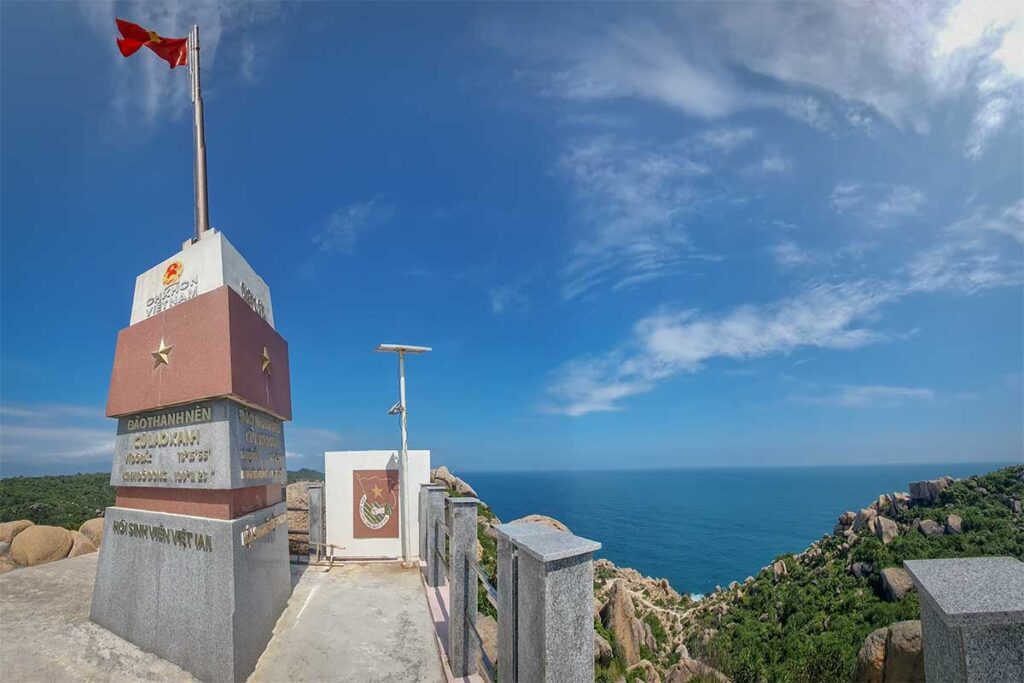
Next to the lighthouse stands the Youth Flagpole, built in 2015 by Vietnamese youth organizations as one of several national sovereignty markers placed on offshore islands. At over 22 meters tall, engraved with the island’s coordinates, it’s a proud symbol for locals and a popular spot for photos.
From a visitor’s perspective, this is a short stop—combine it with the lighthouse visit. There’s little shade around, so bring water and a hat if you linger.
4. Wharf and beaches

The wooden pier and small beaches such as Bãi Nhỏ, Bãi Đông, and Bãi Nam are where most travelers go for a swim. These sandy coves are framed by fishing boats and clear water, particularly attractive in the dry season when the sea is calm. The beaches are quiet and lack the crowds of more famous islands, but they also lack facilities—there are no loungers, cafés, or lifeguards.
If you want a dip, bring your own towel, water, and sunscreen, and be prepared for very local surroundings. On windy or stormy days, the sea can be too rough for swimming.
5. Rocky meadows and capes

Parts of the island are dotted with dramatic rock formations and open headlands, the most notable being Bãi đá Thảo Nguyên (“rocky meadow”) and Mũi Hoàn Bằng, a cape jutting into the sea. These areas are known for their rugged scenery rather than for beach time. You’ll find large boulders, bird life, and uninterrupted sea views.
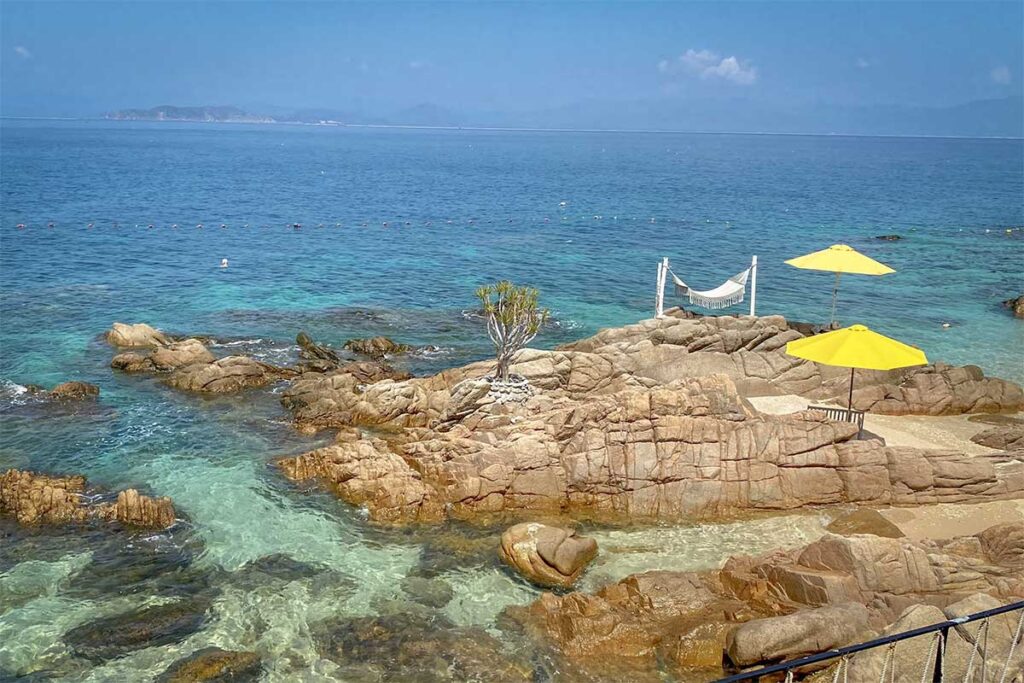
They are best enjoyed for short walks, photos, or simply a quiet escape. Surfaces can be uneven, so sturdy shoes are useful, and there’s little shade, so sunset or sunrise visits are more comfortable than midday.
6. Snorkeling close to shore

The waters around Cu Lao Xanh have fringing reefs in places, particularly near Bãi Nhỏ and Bãi Gala. Don’t expect world-class snorkeling—coral patches are small and fish life modest—but on calm days visibility can be surprisingly good.
There are no rental shops aimed at foreign tourists, so the practical way to snorkel is by arranging it through your homestay or a local fisherman. Bringing your own mask and snorkel is highly recommended. Sea conditions change quickly, so only go out if the water looks calm and you feel confident.
7. Looping the island by motorbike

One of the best experiences on Cu Lao Xanh is simply riding around the island. A concrete road now loops much of the coastline, passing through the fishing village, hugging low cliffs, and climbing gently into the hills. The ride is short—you can do it in under an hour—but it gives you changing views of the sea, the lighthouse in the distance, and the everyday life of the island.
Motorbikes can be rented directly from homestays or guesthouses, usually at low daily rates. Road conditions are generally decent but narrow, with occasional gravel patches. Traffic is minimal, so it’s an easy ride even for less experienced drivers. If you’d rather not drive yourself, locals sometimes offer rides or short tours. Bring sunglasses or goggles, as sea spray and dust are common.
Best time to visit Cu Lao Xanh Island
Timing is important for Cu Lao Xanh because boat access depends heavily on the weather. When the sea is rough, departures are canceled, and even if boats do run, the ride can be uncomfortable. Planning around the seasons makes the difference between a smooth day trip and a frustrating detour.
The dry season runs from March to September, when seas are calmer, skies are clearer, and water visibility is better for swimming or light snorkeling. This is the period when most locals recommend visiting. The rainy season lasts from October to February, with the northeasterly monsoon bringing big swells and unpredictable weather. Between November and January, conditions can be especially rough, and boats often don’t run at all.
For the best balance, aim for late spring to early summer. Even then, always check the weather forecast and confirm with boat operators on the morning of departure—last-minute cancellations are common, and flexibility is essential.
How to get to the island
Getting to Cu Lao Xanh sounds straightforward, but in reality it requires some flexibility. Boats are limited, weather-sensitive, and—if you are a foreign traveler—access may not always be guaranteed. Here’s what to know before you set off.
First step: verify permission/eligibility
If you hold a foreign passport, the very first step is to check whether you’re currently allowed on the island. Some sources say restrictions apply, while others suggest tourists have managed to go. Either way, don’t book accommodation or make firm plans until you’ve confirmed with local tour operators or directly at Hàm Tử pier. Carry your passport, as ID checks are common.
Using Quy Nhon as your base
Quy Nhon is the only practical base for reaching the island. The city is served by Phù Cát Airport (UIH) with daily flights from Hanoi and Ho Chi Minh City, and by Diêu Trì Station on the north–south railway. From either, it’s an easy transfer into the city by taxi, shuttle, or car. Once in Quy Nhon, the ferry and canoe services to Cu Lao Xanh leave from Hàm Tử pier in the city center.
From Quy Nhon to Cu Lao Xanh
- Pier: All boats depart from Hàm Tử pier on the city’s central waterfront. There’s usually a small parking area if you come by motorbike or car.
- High-speed canoe: The fastest option, taking about 30–40 minutes. Prices are around 200,000 VND per person each way, though some operators only sell return tickets bundled with simple tours. Typical departure is 07:30 from Quy Nhon and 14:00 from the island, but times can shift depending on passenger numbers and weather.
- Wooden boat: The slower, more local choice. The trip takes nearly 2 hours, with tickets around 30,000 VND per person each way, plus a small transfer fee if a dinghy is needed to reach shore. Usual departures are 08:00 and 13:00 from Quy Nhon, returning at 07:00 and 15:00 from the island. Boats often wait to fill up, so timing can be loose.
Important: Treat these times and prices as guidelines only. Weather, sea conditions, and passenger numbers can all change the schedule, and cancellations are common in the rainy season. If you want to go, arrive early at Hàm Tử pier, speak directly with operators, and be prepared for plans to shift.

Staying on the island
Reality check
Accommodation on Cu Lao Xanh is extremely limited. You’ll only find a handful of homestays and small guesthouses, most of them family-run. Electricity on the island isn’t 24 hours—power is often supplied on fixed schedules, usually in the evenings—so you’ll need to bring a power bank if you rely on your phone or camera. Internet and mobile data can be patchy, and you shouldn’t expect the level of comfort you’d find in Quy Nhon.
Rooms
The few available places range from very basic to modest but decent. Some homestays use wooden pallets with thin mattresses, while others offer tiled rooms with private bathrooms and air conditioning when power is on. Cleanliness and hospitality are usually fine, and for one night it’s perfectly manageable as long as you set your expectations. Don’t expect boutique charm or luxury amenities—this is simple, functional island accommodation.
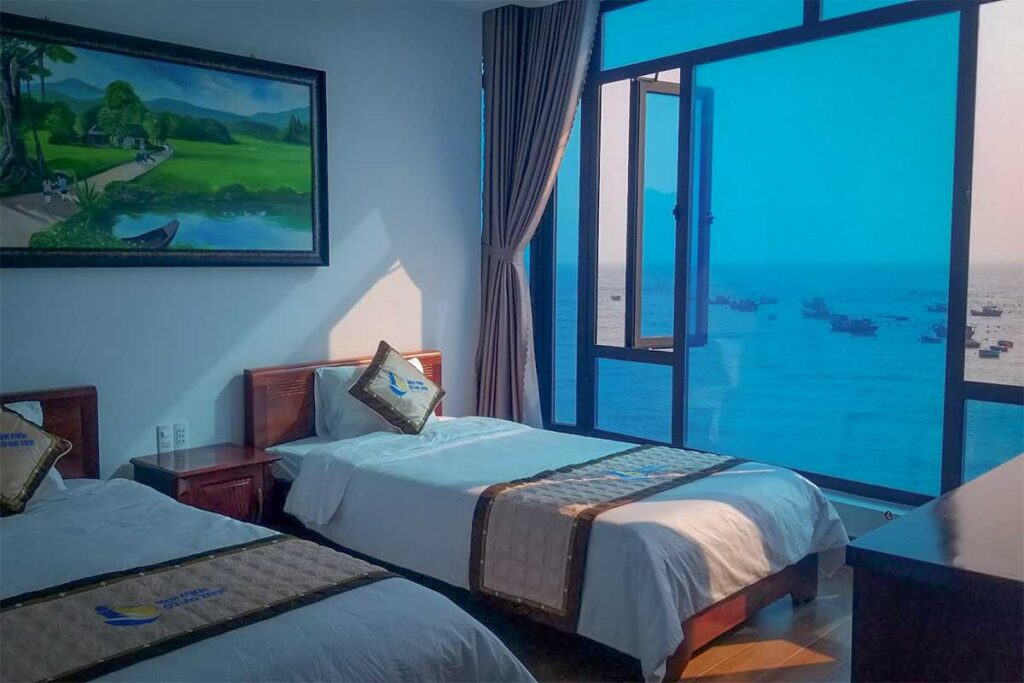
Food
Food options are equally limited. There are no stand-alone restaurants aimed at tourists, but homestays typically provide meals, usually based around what has just come off the boats. Seafood is the highlight—dishes like grilled moon snail, fried flying-fish roe, squid pancakes, and fish cakes are common. Meals are home-style and simple but fresh, and prices are generally low. If you prefer variety, bring a few snacks or fruit from Quy Nhon to supplement what’s available on the island.
Practical visiting information & tips
Documents & money
Carry your passport or ID at all times, as checks are more common here than on the mainland. Bring enough cash for your whole stay—there are no ATMs on the island and card payments are practically unheard of. Small notes are handy for meals and boat rides.
What to bring
Pack for simplicity and self-sufficiency. Essentials include sun protection (reef-safe sunscreen, hat, sunglasses), plenty of drinking water and snacks, and a small supply of basic medicines. A power bank is useful since electricity runs on fixed hours. If you’re prone to seasickness, motion-sickness tablets make the boat ride more comfortable. A dry bag is also worth having to protect your phone or camera from sea spray.
On-island services
Shops are very limited, selling only basic household items, so don’t rely on buying supplies locally. Electricity often runs only in the evenings, and mobile data can be weak or inconsistent. Confirm your return boat ticket as soon as you arrive—boats don’t run late in the day and schedules can change quickly with weather.
Getting around the island
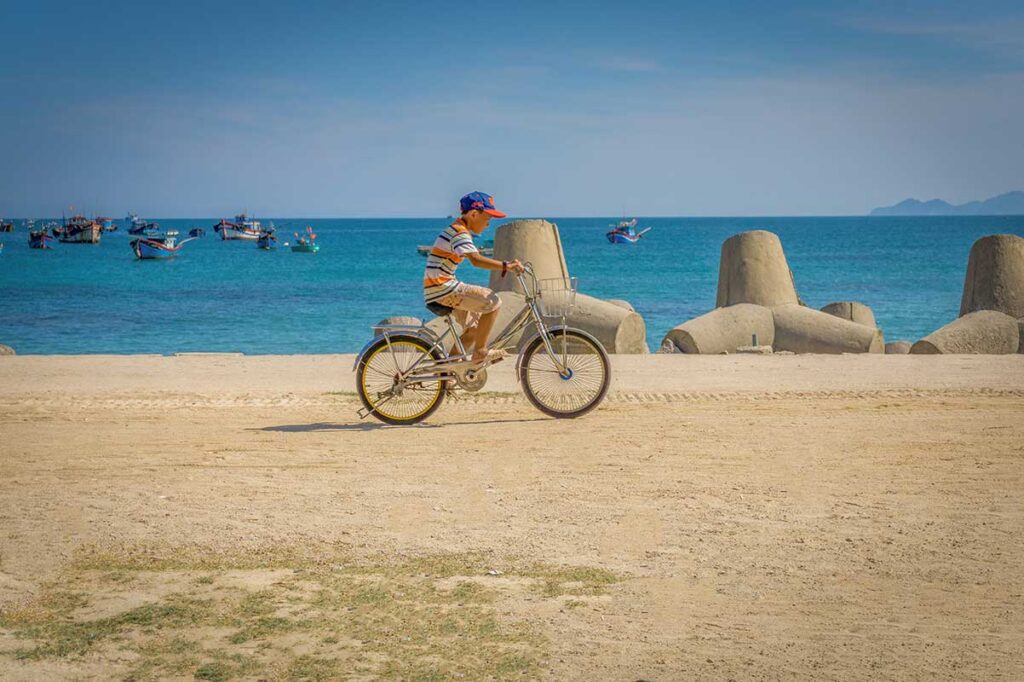
The easiest way to see Cu Lao Xanh is by motorbike, which can be rented directly from homestays or local families. The loop road circles much of the island, with sea views, village life, and hillsides along the way. It’s mostly paved but narrow, with some gravel stretches—manageable if you ride carefully. Traffic is almost nonexistent.
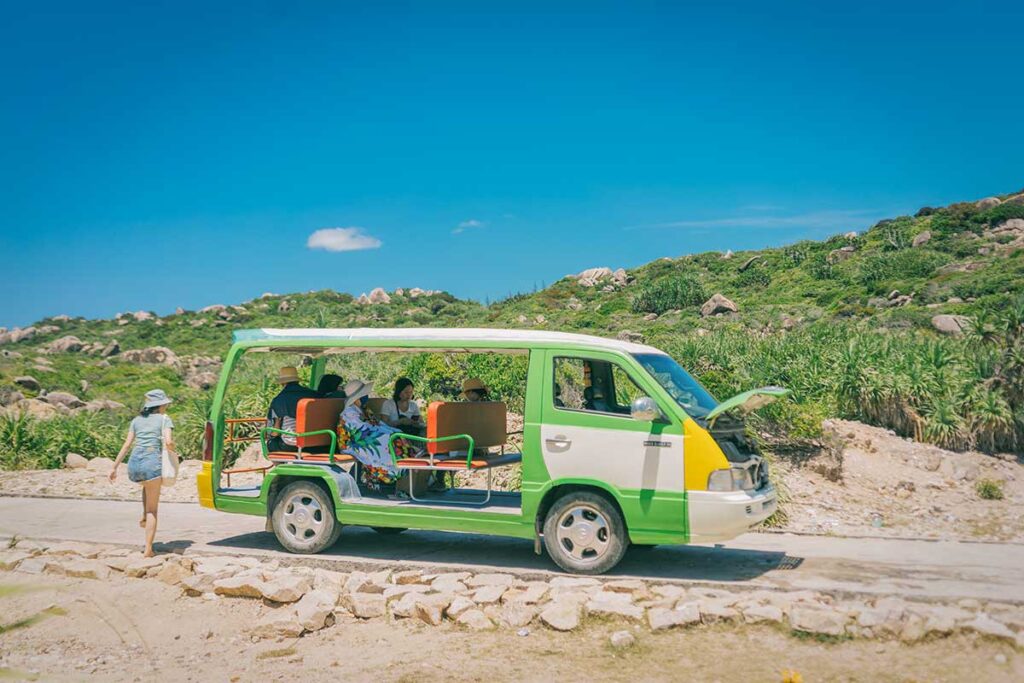
Electric carts also operate as shuttles, mainly arranged through local tourism services; they’re slower and not always available, but useful if you prefer not to drive. Bicycles are not geared toward tourists, and walking makes sense only within the main village.
Sea conditions & safety
The sea can change from calm to rough within hours. Always check the forecast before you go, and if locals advise against swimming, take it seriously. Stick to the main beaches if you want to swim—don’t wander into isolated coves on your own, especially in swell.
Respect local life
Cu Lao Xanh is first and foremost a fishing community. Be mindful when walking around the village: ask before taking photos of people, homes, or boats, and keep clear of working areas on the beach. Facilities for waste disposal are limited, so take your rubbish back with you if possible. A respectful attitude makes for a much warmer welcome.
Is Cu Lao Xanh Island worth visiting?
For most foreign travelers, Cu Lao Xanh is probably not worth building a trip around. The scenery is pleasant, the water can be clear, and the island has a lived-in fishing community that gives it character. But the reality is that access for foreigners is uncertain, boat schedules are weather-sensitive, and services on the island are minimal. With so many other Vietnamese islands and beaches that are easier to visit, Cu Lao Xanh ends up being more of a curiosity than a must-see.
If you’re especially drawn to remote places or want to experience a low-key fishing island with almost no foreign visitors, it may be rewarding—provided you can confirm access. For everyone else, there are easier options that deliver a similar island atmosphere without the complications.
Better-fit alternatives:
- Cham Islands (Cù Lao Chàm, near Hoi An): A small archipelago where you can both do a day trip and stay overnight. There are several beautiful beaches, simple homestays, and a relaxed vibe—accessible but far from overdeveloped.
- Nam Du Islands (Kien Giang Province): Further south in the Gulf of Thailand, Nam Du offers much of what Cu Lao Xanh promises—authentic fishing villages, overnight stays, and a slow island rhythm—without restrictions for foreigners. It’s still under the radar, even for many Vietnamese tourists.
- Hon Kho Island (near Quy Nhon): Best as a short outing for snorkeling and seafood lunches. Fun but activity-driven (banana boats, jet skis) and no overnight options—closer to a half-day excursion than an island escape.

